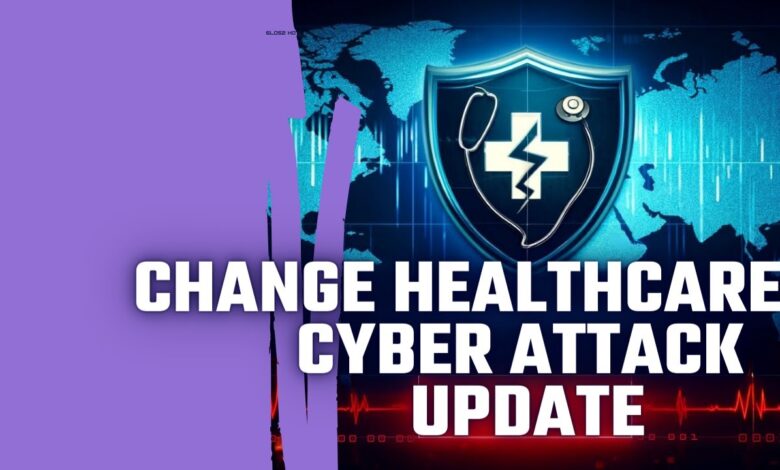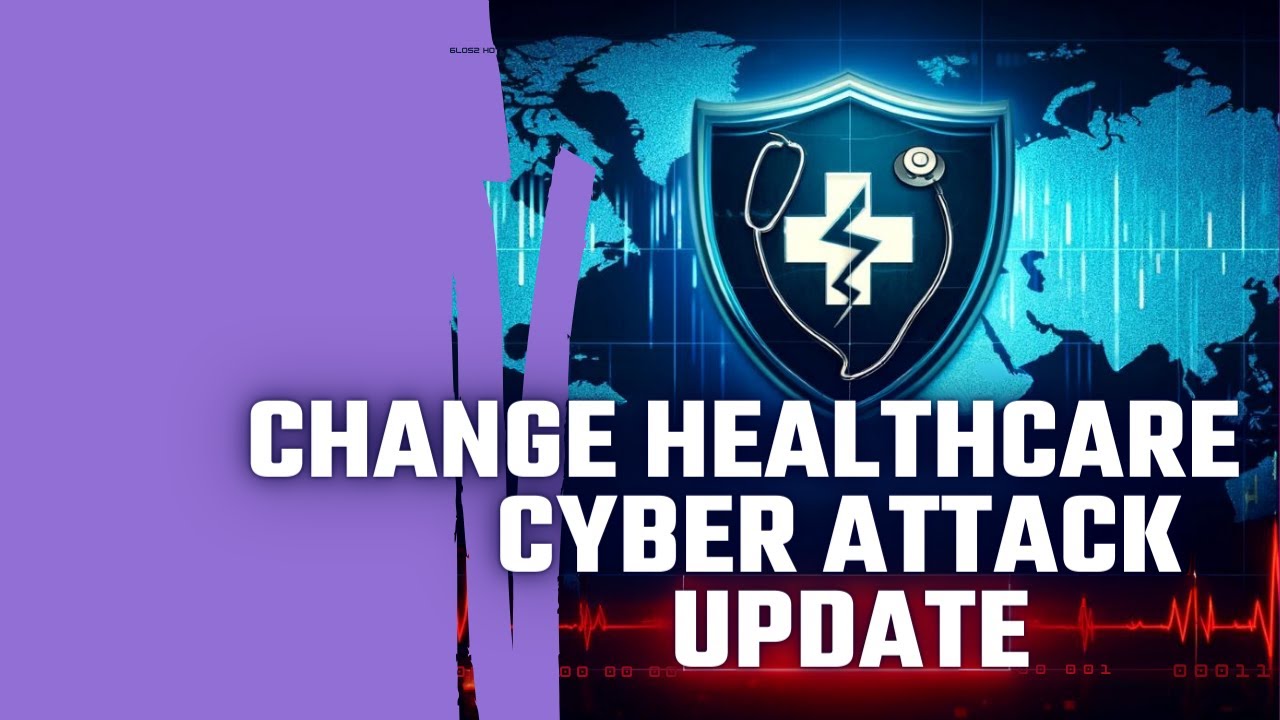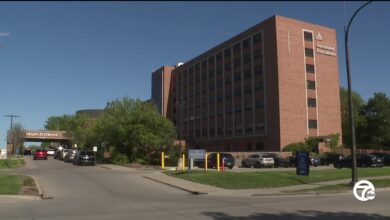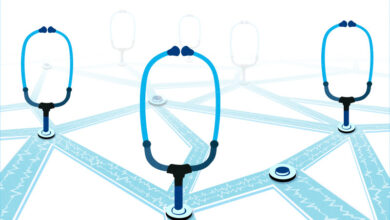
Tracking Ascension Healthcare Cyberattack Impact
Tracking Ascension Healthcare cyberattack impact: The recent cyberattack on Ascension Healthcare sent shockwaves through the healthcare industry, raising critical questions about data security and patient privacy. This wasn’t just a data breach; it was a wake-up call highlighting the vulnerability of our increasingly digital healthcare systems and the devastating consequences for patients, the organization, and public trust. We’ll delve into the specifics of this attack, exploring its scope, impact on patient care, financial repercussions, and the long-term implications for cybersecurity in healthcare.
We’ll examine the methods used by the attackers, the types of data compromised, and the immediate and long-term effects on patient care. Beyond the immediate crisis, we’ll also analyze the financial and legal ramifications for Ascension, the reputational damage, and the crucial steps needed to improve cybersecurity protocols and prevent future incidents. This isn’t just about numbers and statistics; it’s about the real-world impact on people’s lives and the future of healthcare.
Defining the Scope of the Cyberattack

Source: rackcdn.com
The Ascension Healthcare cyberattack, while the specifics remain partially undisclosed due to ongoing investigations, significantly impacted the organization’s patient data and operational systems. Understanding the scope of this breach requires examining the targeted systems, the vulnerabilities exploited, and the methods employed by the attackers. This analysis aims to provide a clearer picture of the incident’s impact.
Nature of the Targeted System
The attack targeted Ascension’s internal systems, which included various components responsible for managing patient data, scheduling appointments, and facilitating electronic health records (EHRs). This likely involved a complex network encompassing servers, databases, and applications integral to the daily operations of a large healthcare provider. The attackers didn’t simply target a single, isolated system; instead, they appear to have aimed for a wide-reaching compromise impacting multiple facets of Ascension’s digital infrastructure.
The scale of the operation suggests a sophisticated and well-planned attack.
Vulnerabilities Exploited
While the precise vulnerabilities haven’t been publicly disclosed by Ascension, the nature of the attack suggests potential weaknesses in several areas. These could include outdated software with known security flaws, insufficient network security measures (such as inadequate firewalls or intrusion detection systems), or weak access controls allowing unauthorized access to sensitive data. Phishing campaigns, exploiting human error through social engineering tactics, are also a plausible vector of attack.
Tracking the Ascension Healthcare cyberattack’s impact is a complex process, requiring careful analysis of stolen data and its potential consequences. Understanding how such breaches affect patient data security highlights the importance of robust AI-driven solutions, like those discussed in this insightful article on Salesforce Healthcare AI with Sean Kennedy salesforce healthcare ai sean kennedy. Ultimately, learning from this attack helps us better prepare for future threats and improve healthcare cybersecurity measures.
The attackers likely leveraged multiple vulnerabilities, exploiting a combination of technical weaknesses and human fallibility to gain entry and maintain persistence within Ascension’s systems.
Data Compromised
The compromised data included sensitive patient information, such as names, addresses, dates of birth, Social Security numbers, medical records, and financial information. The extent of the data breach remains under investigation, but the potential for identity theft and medical fraud is significant. The attackers likely exfiltrated data over a period, potentially using techniques to evade detection. The sheer volume of data potentially compromised underscores the gravity of the situation.
Attack Methods
The attackers likely employed a multi-stage approach. This could have begun with initial reconnaissance to identify vulnerabilities, followed by exploitation of those weaknesses to gain unauthorized access. Once inside, they likely moved laterally across the network to access sensitive data, using techniques to maintain persistence and evade detection. Data exfiltration, the process of stealing and removing the data, would have been a critical final step.
Ransomware deployment is also a strong possibility, though Ascension has not confirmed this publicly.
Comparison of Affected Systems, Tracking ascension healthcare cyberattack impact
| System Name | Data Type | Access Level | Security Status |
|---|---|---|---|
| Patient Database | Patient Medical Records, Personal Information | High | Compromised |
| Appointment Scheduling System | Patient Appointments, Contact Information | Medium | Compromised |
| Financial Systems | Billing Information, Payment Details | High | Potentially Compromised |
| Internal Communications Network | Employee Communications, Internal Documents | High | Potentially Compromised |
Impact on Patient Care
The Ascension Healthcare cyberattack, while not directly causing physical harm, significantly impacted patient care across multiple dimensions. The immediate disruption of services, coupled with the long-term erosion of trust, created a ripple effect felt by patients, healthcare providers, and the system as a whole. Understanding this impact is crucial for improving future cybersecurity measures and ensuring patient safety.The immediate consequences of the attack manifested in various ways, ranging from delayed diagnoses and treatments to compromised patient data.
The inability to access electronic health records (EHRs) resulted in significant workflow disruptions, forcing clinicians to rely on paper charts or resort to manual data entry, leading to inefficiencies and potential errors. This disruption also affected appointment scheduling, medication management, and the timely transfer of critical patient information between healthcare providers.
Disrupted Services and Patient Treatment
The attack’s impact on specific services highlighted the vulnerability of modern healthcare systems. For example, imagine a patient scheduled for a crucial surgery. Access to pre-operative reports and imaging data might have been compromised, delaying the procedure and potentially affecting the patient’s recovery. Similarly, a patient managing a chronic condition relying on electronic prescription refills might have experienced delays in obtaining necessary medications, leading to a deterioration in their health.
In scenarios involving emergency care, the inability to quickly access a patient’s medical history could have had life-threatening consequences. These disruptions cascaded, impacting not only the individual patient but also the overall efficiency and effectiveness of the healthcare system.
Tracking the Ascension Healthcare cyberattack’s impact is a complex undertaking, especially considering the ripple effects. The news about Steward Health Care’s Ohio hospital closures and a Pennsylvania facility being at risk, as reported in this article steward ohio hospitals closures pennsylvania facility at risk , highlights how widespread vulnerabilities in the healthcare system can be. This raises serious questions about the long-term consequences of the Ascension breach and the overall preparedness of healthcare providers against future attacks.
Long-Term Effects on Patient Trust and Healthcare Delivery
Data breaches, such as the one experienced by Ascension, severely damage patient trust. The exposure of sensitive personal and medical information creates anxiety and fear among patients, potentially leading to decreased utilization of healthcare services. This erosion of trust can be particularly damaging in the long term, impacting patient willingness to share critical information with healthcare providers, hindering the effectiveness of care.
The financial costs associated with increased security measures, legal ramifications, and reputational damage further burden the healthcare system, diverting resources away from direct patient care. The resulting decrease in patient volume and increased operational costs create a vicious cycle that negatively affects both patient care and the financial stability of healthcare providers.
Potential Scenarios Demonstrating Impact on Patient Safety
Several scenarios illustrate the potential risks to patient safety arising from the cyberattack. For instance, a delay in accessing allergy information due to system downtime could lead to an adverse reaction to medication. Similarly, a disruption in the communication system could hinder the timely coordination of care among different healthcare professionals involved in a patient’s treatment, potentially resulting in adverse events.
The loss or alteration of crucial diagnostic images could lead to misdiagnosis and inappropriate treatment. These scenarios emphasize the critical need for robust cybersecurity measures to prevent future incidents and ensure patient safety.
Strategies for Mitigating Future Impact on Patient Care
To mitigate the impact of future cyberattacks on patient care, a multi-faceted approach is necessary.
- Invest in robust cybersecurity infrastructure: This includes implementing advanced threat detection and prevention systems, regular security audits, and employee training on cybersecurity best practices.
- Develop comprehensive incident response plans: These plans should Artikel clear procedures for handling cyberattacks, including communication protocols with patients and regulatory bodies.
- Enhance data backup and recovery systems: Regular backups of critical data are essential to ensure quick restoration in case of a breach.
- Prioritize patient data privacy and security: This includes implementing strong access controls, encryption, and data minimization strategies.
- Foster collaboration and information sharing: Healthcare organizations should collaborate to share best practices and learn from each other’s experiences.
Financial and Legal Ramifications
The Ascension Healthcare cyberattack, like many others targeting healthcare providers, carries significant financial and legal consequences that ripple far beyond the immediate costs of remediation. Understanding these ramifications is crucial for assessing the full impact and for implementing preventative measures in the future. The financial burden encompasses direct costs, such as those associated with recovery and legal fees, as well as indirect losses stemming from reputational damage and lost productivity.
Simultaneously, the legal ramifications are extensive, involving potential regulatory penalties, lawsuits from affected patients, and investigations by various government agencies.
Financial Losses from the Cyberattack
The financial losses incurred by Ascension Healthcare due to this cyberattack are multifaceted and likely substantial. Direct costs include expenses related to incident response, data recovery, system restoration, and cybersecurity enhancements. These can run into millions of dollars, depending on the scale of the breach and the complexity of the systems involved. Indirect losses, which are often harder to quantify, include the cost of lost productivity, disruption of patient care, reputational damage leading to decreased patient volume, and potential loss of contracts with insurers or government agencies.
For example, the 2017 Equifax breach cost the company over $700 million in settlements, fines, and legal fees, demonstrating the potential magnitude of such incidents. The financial impact on Ascension will likely be significant, considering the size and scope of their operations.
Legal Liabilities and Regulatory Penalties
The legal liabilities arising from a data breach of this magnitude are considerable. Ascension Healthcare faces potential legal action from patients whose protected health information (PHI) was compromised, particularly if the breach resulted in identity theft or financial harm. Additionally, Ascension is subject to investigations and potential penalties from regulatory bodies such as the Office for Civil Rights (OCR) under HIPAA, the FTC, and state attorneys general.
HIPAA violations can result in significant fines, ranging from $100 to $50,000 per violation, depending on the nature and extent of the breach. The penalties could be even higher if the organization is found to have knowingly neglected security protocols. Further legal ramifications could include class-action lawsuits from affected patients and legal fees associated with defending against such lawsuits.
The Premera Blue Cross breach in 2015, for example, resulted in significant legal settlements and regulatory fines.
Costs of Remediation, Recovery, and Legal Counsel
The costs associated with remediation, recovery, and legal counsel after a cyberattack are substantial and often unpredictable. Remediation involves identifying the extent of the breach, containing the damage, and securing systems to prevent further attacks. Recovery includes restoring data, rebuilding systems, and implementing enhanced security measures. Legal counsel is necessary to navigate the complex regulatory landscape, manage potential lawsuits, and comply with disclosure requirements.
These combined costs can easily reach tens of millions of dollars, especially for large healthcare organizations like Ascension. The need for specialized cybersecurity experts, forensic investigators, and legal teams further inflates these expenses. It is crucial to note that these costs are often incurred in addition to the indirect financial losses mentioned previously.
Comparison with Similar Incidents
The financial impact of this attack on Ascension can be compared to other significant healthcare data breaches. The average cost of a data breach in the healthcare industry is considerably higher than in other sectors, often exceeding $10 million due to the sensitive nature of the data involved and the stringent regulatory environment. Incidents like the Anthem breach (2015) and the University of California San Francisco breach (2018) resulted in substantial financial losses and long-term reputational damage.
While the precise financial impact of the Ascension breach is still unfolding, it’s reasonable to expect it to fall within a similar range, considering the scale of the organization and the potential volume of compromised data.
Financial and Legal Consequences Table
| Cost Category | Estimated Cost | Legal Ramifications | Timeline |
|---|---|---|---|
| Incident Response & Remediation | $5-15 million (estimate) | HIPAA investigations, potential fines | Ongoing (months) |
| Data Recovery & System Restoration | $1-5 million (estimate) | Potential lawsuits from affected patients | 6-12 months |
| Legal Counsel & Litigation | $2-10 million (estimate) | State and federal investigations, potential settlements | Years |
| Reputational Damage & Lost Revenue | Variable, potentially significant | Loss of patient trust, potential impact on future contracts | Long-term |
Reputational Damage and Public Perception
The Ascension Healthcare cyberattack, regardless of its ultimate scope and resolution, will undoubtedly inflict significant reputational damage. The very nature of a healthcare data breach, involving sensitive patient information like medical records and financial details, carries a high risk of eroding public trust and attracting negative media attention. This damage can extend far beyond the immediate aftermath of the attack, potentially impacting patient acquisition, employee morale, and long-term financial stability.The potential for negative media coverage is substantial.
News outlets, particularly those focused on health and technology, will likely scrutinize Ascension’s response to the breach, highlighting any perceived failures in security protocols or communication transparency. Public outcry could manifest in various forms, from online petitions and social media campaigns to legal actions by affected patients. The severity of this public backlash will depend on factors such as the number of individuals affected, the type of data compromised, and the perceived responsiveness of Ascension’s management.
Strategies for Managing Public Perception and Restoring Trust
Effective communication is paramount. Ascension needs to proactively and transparently communicate with affected patients, providing clear and concise information about the breach, the steps taken to mitigate its impact, and the support offered to those affected. This includes establishing a dedicated website and hotline for patients to access information and seek assistance. A swift and sincere apology, acknowledging the severity of the situation and expressing remorse for the inconvenience and potential harm caused, is crucial.
Furthermore, Ascension should engage with the media proactively, offering interviews and press releases to control the narrative and prevent the spread of misinformation. Transparency and empathy will be key to mitigating negative public sentiment. Finally, Ascension should commit to enhancing its cybersecurity infrastructure and implementing robust data protection measures, demonstrating a tangible commitment to preventing future breaches.
This commitment should be publicly communicated and independently verified.
Comparison to Similar Healthcare Cyberattacks
Several healthcare organizations have faced similar challenges. The 2015 Anthem breach, for example, exposed the personal information of nearly 80 million individuals, leading to significant financial losses and reputational damage. Anthem’s response, while not perfect, highlighted the importance of swift action and transparent communication in mitigating the long-term effects of a cyberattack. In contrast, organizations that have been less transparent or responsive have faced more sustained and severe reputational damage.
The Premera Blue Cross breach, for example, suffered from prolonged negative media coverage and legal battles due to its initial handling of the incident. Analyzing these cases provides valuable lessons for Ascension on how to manage the fallout from the attack and minimize long-term consequences.
Potential for Long-Term Reputational Damage
The long-term impact on Ascension’s reputation could be considerable. Even with a well-executed response strategy, the organization may face persistent negative perceptions among patients, potential investors, and employees. This could lead to decreased patient volume, difficulty attracting and retaining skilled professionals, and challenges in securing future funding. The association with a major data breach could linger for years, impacting the organization’s ability to compete effectively in the healthcare market.
Imagine, for instance, a scenario where prospective patients actively choose competing hospitals due to concerns about data security, resulting in a sustained loss of market share. This long-term erosion of trust could ultimately jeopardize the financial health and sustainability of the organization, even after the immediate crisis has subsided.
Cybersecurity Measures and Prevention

Source: dailysecurityreview.com
The Ascension Healthcare cyberattack highlighted critical vulnerabilities in their cybersecurity infrastructure. A thorough analysis reveals a need for significant improvements across multiple areas to prevent future incidents. This section details the weaknesses, preventative measures, best practices, and a proposed plan for enhanced security.
The attack likely exploited a combination of factors. Insufficient endpoint security, outdated software, and a lack of robust multi-factor authentication (MFA) likely played significant roles. Furthermore, employee training on phishing and social engineering techniques may have been inadequate, making them susceptible to spear-phishing attacks that could have initiated the breach. Internal network segmentation was also probably insufficient, allowing lateral movement once initial access was gained.
Finally, a lack of proactive threat hunting and regular security audits may have allowed the attackers to remain undetected for an extended period.
Weaknesses in Cybersecurity Infrastructure
Several key weaknesses contributed to the success of the attack. These include a lack of robust endpoint detection and response (EDR) capabilities, insufficient patching of vulnerabilities in software and operating systems, inadequate network segmentation, and a reliance on outdated security technologies. Furthermore, a lack of comprehensive security awareness training left employees vulnerable to social engineering attacks. The absence of a comprehensive incident response plan also hampered the organization’s ability to effectively contain and mitigate the attack.
Cybersecurity Measures to Prevent or Mitigate the Attack
Implementing a layered security approach is crucial. This would involve strengthening endpoint security with advanced EDR solutions capable of detecting and responding to malicious activity in real-time. Regular patching and software updates are essential to address known vulnerabilities. Implementing strong MFA for all accounts significantly reduces the risk of unauthorized access, even if credentials are compromised. Robust network segmentation limits the impact of a breach by preventing lateral movement.
Finally, regular security audits and penetration testing can identify and address vulnerabilities before they can be exploited.
Best Practices for Securing Healthcare Data and Systems
Adherence to industry best practices is paramount. This includes compliance with regulations like HIPAA, which mandates specific security measures for protecting patient health information (PHI). Regular security awareness training for all employees is essential to mitigate the risk of human error. Implementing data loss prevention (DLP) tools helps to prevent sensitive data from leaving the organization’s control.
The use of encryption for data at rest and in transit is also crucial to protect PHI from unauthorized access. Finally, a robust incident response plan is necessary to effectively manage and mitigate the impact of a cyberattack.
Plan for Improving Cybersecurity Protocols and Employee Training
A comprehensive plan is needed, incorporating several key elements. This includes investing in advanced security technologies such as EDR, SIEM (Security Information and Event Management), and SOAR (Security Orchestration, Automation, and Response) systems. A robust employee training program should be implemented, including regular phishing simulations and education on social engineering tactics. Regular security audits and penetration testing should be conducted to identify and address vulnerabilities.
Finally, a clearly defined incident response plan, including communication protocols and escalation procedures, is critical. This plan should be regularly tested and updated to ensure its effectiveness.
Preventing Future Similar Incidents
By implementing the recommended security measures, Ascension Healthcare could significantly reduce its vulnerability to future attacks. The combination of advanced security technologies, robust employee training, and a comprehensive incident response plan would create a more resilient security posture. Regular security assessments and continuous monitoring would further enhance the organization’s ability to detect and respond to threats in a timely manner.
For example, the implementation of a zero trust security model, which assumes no implicit trust, would significantly enhance security by requiring verification at every access point, limiting the damage from a single compromised account. This model, coupled with robust threat intelligence feeds, would allow for proactive threat hunting and mitigation.
Long-Term Recovery and Resilience
The aftermath of a cyberattack on a healthcare organization requires a multifaceted and sustained recovery effort. It’s not simply about restoring systems; it’s about rebuilding trust, enhancing security, and ensuring the long-term viability and resilience of the organization. This involves a comprehensive strategy encompassing technological, operational, and reputational recovery.
The long-term recovery process is a marathon, not a sprint. It necessitates a methodical approach, encompassing technological restoration, operational stabilization, and the crucial rebuilding of trust with patients, staff, and stakeholders. Success hinges on meticulous planning, proactive communication, and a commitment to continuous improvement in cybersecurity practices.
Steps Involved in the Long-Term Recovery Process
The recovery process unfolds in several distinct phases, each demanding careful attention to detail. A structured approach, often guided by incident response plans, is essential to ensure a smooth transition back to normal operations and the prevention of future incidents.
- System Restoration and Data Recovery: This involves painstakingly restoring compromised systems and recovering lost or corrupted data. This phase requires rigorous data validation and verification to ensure data integrity.
- Operational Resumption: Once systems are restored, a gradual resumption of normal operations begins, starting with critical services and gradually expanding to all departments. Thorough testing and validation are crucial at each stage.
- Security Enhancements: This is a critical phase, focusing on strengthening cybersecurity defenses. This includes implementing new security technologies, updating existing systems, and enhancing employee training on cybersecurity best practices.
- Compliance and Regulatory Reporting: Healthcare organizations must comply with relevant regulations (e.g., HIPAA in the US) and report the incident to appropriate authorities, which may include law enforcement and regulatory bodies.
- Post-Incident Analysis and Lessons Learned: A comprehensive review of the incident is vital to identify vulnerabilities, understand the root causes, and implement preventative measures to avoid similar attacks in the future.
Strategies for Rebuilding Trust
Rebuilding trust after a cyberattack is paramount. Transparency, proactive communication, and demonstrable commitment to patient safety are key elements in this process.
- Transparent Communication: Openly communicate with patients and stakeholders about the incident, its impact, and the steps being taken to address it. Avoid minimizing the situation or withholding information.
- Patient Support and Assistance: Provide support to patients affected by the incident, offering assistance with accessing their medical records or addressing any concerns they may have.
- Demonstrating Commitment to Security: Publicly share the steps being taken to enhance cybersecurity, highlighting investments in new technologies and employee training. This demonstrates a commitment to preventing future incidents.
- Third-Party Audits and Validation: Consider engaging independent third-party auditors to assess the organization’s cybersecurity posture and provide validation of its security measures.
Enhancing Organizational Resilience
Building resilience against future cyberattacks involves a multi-pronged approach that goes beyond simply reacting to incidents. It’s about proactively mitigating risks and creating a culture of security.
Tracking the Ascension Healthcare cyberattack’s impact is a complex process, requiring a deep dive into data breaches and their long-term effects. It’s interesting to consider this in light of other healthcare industry shifts, like the recent news about Walmart Health’s closure, as reported in this article: despite walmart healths closure the company healthcare destination scott bowman. Understanding how these events affect patient care and data security is crucial when analyzing the overall fallout from the Ascension breach.
This includes regular security awareness training for all employees, implementing robust multi-factor authentication, deploying advanced threat detection systems, and conducting regular security audits and penetration testing. Furthermore, establishing robust incident response plans and regularly testing these plans is critical. A strong security culture, where security is everyone’s responsibility, is essential.
Timeline of the Recovery Process
The recovery timeline varies depending on the severity and scope of the cyberattack. However, a general timeline might look like this:
| Phase | Timeline (Estimated) | Activities |
|---|---|---|
| Immediate Response | Days to Weeks | Containment, damage assessment, initial communication |
| System Restoration | Weeks to Months | Data recovery, system rebuild, security patching |
| Operational Resumption | Months | Phased return to normal operations, testing |
| Long-Term Recovery and Resilience Building | Months to Years | Security enhancements, employee training, trust rebuilding |
Examples of Successful Recovery Strategies
Several healthcare organizations have successfully navigated cyberattacks and emerged stronger. While specifics are often confidential, analyzing publicly available information from incidents reveals common themes: rapid response, transparent communication, and a commitment to long-term security improvements. For example, organizations that have successfully recovered often highlight their proactive investments in security infrastructure, rigorous employee training programs, and their commitment to continuous monitoring and improvement as key factors in their successful recovery.
Wrap-Up: Tracking Ascension Healthcare Cyberattack Impact

Source: ytimg.com
The Ascension Healthcare cyberattack serves as a stark reminder of the ever-present threat of cybercrime in the healthcare sector. While the immediate crisis may be addressed, the long-term implications—from rebuilding trust to strengthening cybersecurity infrastructure—will require sustained effort and collaboration. The lessons learned from this incident should prompt a critical reassessment of cybersecurity practices across the healthcare industry, emphasizing proactive measures, robust security protocols, and ongoing employee training.
Ultimately, protecting patient data and ensuring the integrity of healthcare systems is a shared responsibility that demands constant vigilance and innovation.
Popular Questions
What type of data was reportedly compromised in the Ascension Healthcare cyberattack?
While the exact details are often not publicly released for security reasons, compromised data in such attacks typically includes patient Protected Health Information (PHI), such as names, addresses, medical records, insurance information, and social security numbers.
How can patients find out if their information was affected?
Ascension typically notifies affected individuals directly if their information was compromised. Check Ascension’s official website and any related news releases for updates and instructions on how to check your status.
What steps should patients take if they believe their information was compromised?
Monitor your credit reports regularly, consider a credit freeze, and report any suspicious activity to the appropriate authorities and credit bureaus. Contact Ascension’s designated support line if one is available.
What long-term effects might this cyberattack have on the healthcare industry as a whole?
It’s likely to spur increased investment in cybersecurity measures, stricter regulations, and a greater focus on employee training and awareness. It may also lead to increased scrutiny of healthcare data handling practices and a renewed emphasis on patient trust.





